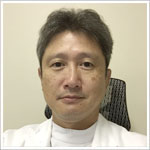第15回講演会
- 日程
- 2023年2月25日(土)
- 会場
- オンライン開催
- 参加者数
- 約30名
- 講演内容
-
-
基調講演1
「がん微小環境における老化細胞とSASPの機能」
高橋 暁子
(公益財団法人 がん研究会 がん研究所 細胞老化研究部・部長
NEXT-Gankenプログラム がん細胞社会成因解明プロジェクト・プロジェクトリーダー兼任)座長:佐谷 秀行
(藤田医科大学がん医療研究センター センター長) -

細胞老化は生体に加わるストレスによって誘導され、細胞増殖を停止させる重要ながん抑制機構として働いている一方で、老化細胞では炎症性蛋白質やエクソソームなどの細胞外小胞の分泌が亢進するSASP(senescence-associated secretory phenotype)によって慢性的な炎症を引き起こし、がん・動脈硬化・肺線維症のような加齢性疾患の発症に関わることが知られている。我々はこれまでに、細胞質に存在するゲノムDNA断片による核酸センサー(cGAS-STING経路)の活性化や(Takahashi et al., Nature Commun., 2018)、細胞老化でおこるエピゲノム異常が(Miyata et al., PNAS, 2021)、SASPの誘導に重要であることを報告してきた。さらに、老化細胞はがん抑制機構である細胞競合を阻害することで、がん遺伝子変異細胞の生存を促すことが明らかとなり(Igarashi et al., Nature Commun., 2022)、老化細胞に選択的に細胞死を誘導するSenolyticsが加齢性疾患を抑制する新しい治療戦略として注目されている。本講演では、がん微小環境における老化細胞の機能とSASPに関する最新の知見を紹介する。
-
基調講演2
「造血幹細胞移植後のメチル化年令による幹細胞加令現象について」
鬼塚 真仁
(東海大学医学部 血液・腫瘍内科 准教授)座長:安藤 潔
(東海大学医学部 血液・腫瘍内科 教授) -

近年、老化したヒト造血細胞クローン(clonal hematopoiesis of indeterminate potential: CHIP)が積極的に全身の老化現象に関与していることが示されてきた。従って、ヒト老化を考える上で造血細胞老化のメカニズムを解明することは重要な課題である。ヒトの造血細胞の老化メカニズムの解析を行う上で、大きな二つの障壁が存在する。第1に、造血研究に汎用されるマウスは、ヒトの寿命が大きく異なることから、動物実験モデルによるヒト造血細胞の老化解明が困難であること、さらに第2の障壁は細胞年齢を客観的に測定する方法が存在しなかったことである。この点をふまえて、我々は血液疾患に対する標準治療となっている造血幹細胞移植療法に着目した。年齢の異なるドナー・レシピエント間で行われる同種造血幹細胞移植は、患者体内に移植されたドナー細胞がどのように加齢するか解析可能な唯一のヒトでのモデルといえる。次に、細胞年齢を客観的に測定する手法として、2013年にHorvath法を用い、同種移植後の細胞年齢の測定を行った。本手法は網羅的なCpGアイランドのメチル化解析からchronologicalな年齢に強く相関するメチル化サイトを353カ所特定したことに由来する(Genome Biol. 2013)。この353カ所のメチル化サイトの解析により、不可能であった客観的な細胞年齢測定が初めて可能となり、今回我々は、臍帯血移植後のドナー細胞が、患者体内でどのように加齢するのか解析した。その結果移植された臍帯血細胞はchronologicalな時間経過の約2倍の速度で加齢していることを発見した。臍帯血移植ドナーで得られた知見の詳細を、当科で行ってきたマウスモデルでの造血幹細胞加齢モデルをもとに提示する。
-
The 15th symposium
- Speech
-
-
Special Lecture1
“Functions of senescent cells and the SASP in the cancer microenvironment”
Akiko Takahashi
Chief, Division of Cellular Senescence, Cancer Institute of Japanese Foundation for Cancer Research
Project Leader, Cancer Cell Communication Project, NEXT-Ganken Program -

Cellular senescence is induced by various stresses in vivo and acts as an important tumor mechanism to stop proliferation of damaged cells. However, the senescence-associated secretory phenotype (SASP) increases the secretion of inflammatory proteins and extracellular vesicles such as exosomes in senescent cells. The SASP is known to cause chronic inflammation and contribute to the development of age-related diseases such as cancer, arteriosclerosis, and pulmonary fibrosis. We previously reported that activation of nucleic acid sensors (the cGAS-STING pathway) by genomic DNA fragments in the cytoplasm (Takahashi et al., Nature Commun., 2018) and epigenomic alterations during cellular senescence (Takahashi et al., Mol. Cell, 2012; Miyata et al., PNAS, 2021) are key to induce the SASP. Recently, we found that the SASP factor secreted from senescent cells promotes the survival of oncogenic mutated cells by inhibiting cell competition, which is a mechanism eliminating oncogenic cells from normal epithelial layers in the early stage of cancer development (Igarashi et al., Nature Commun., 2022). Senolytics drugs, that selectively induce cell death in senescent cells, recovered the efficiency of cell competition, suggesting that senolytic drugs are promising strategy to suppress age-related diseases. In this talk, I will present the latest findings on the functions of senescent cells and the SASP in the cancer microenvironment.
-
Special Lecture2
“The Phenomenon of Stem Cell Aging according to Methylation Estimates of Age After Hematopoietic Stem Cell Transplantation”
Makoto Onizuka
Associate Professor, Department of Hematology & Oncology, Tokai University -

Over the past few years, research has indicated that clonal hematopoiesis of indeterminate potential (CHIP) is actively involved in systemic aging. Therefore, the mechanism of hematopoietic cell aging needs to be elucidated in light of human aging. There are two major obstacles to the analysis of mechanism by which human hematopoietic cells age. First, mice are commonly used in hematopoietic research, but their lifespan differs considerably from that of humans, hampering elucidation of the aging of human hematopoietic cells in animal models. Second, there is no objective method by which to measure cellular age. Given this, we focused on hematopoietic stem cell transplantation, which has become the standard treatment for hematological disorders. Allogeneic hematopoietic stem cell transplantation between donors and recipients of different ages is the only human model that allows an analysis of how transplanted donor cells age in a patient. In 2013, we used the Horvath method to objectively measure cellular age after allogeneic transplantation. This method is based on the identification of 353 methylation sites that closely correlate with chronological age according to a comprehensive analysis of CpG island methylation (Genome Biol. 2013). Analysis of these 353 methylation sites allowed us to objectively measure cellular age for the first time, something that had not been possible before, and we analyzed how donor cells age in patients after cord blood transplantation. Results revealed that transplanted cord blood cells age about twice as fast as the elapsed time (chronological age). The details of the findings obtained from cord blood transplant donors are presented based on a mouse model of hematopoietic stem cell aging that we have created.
-







